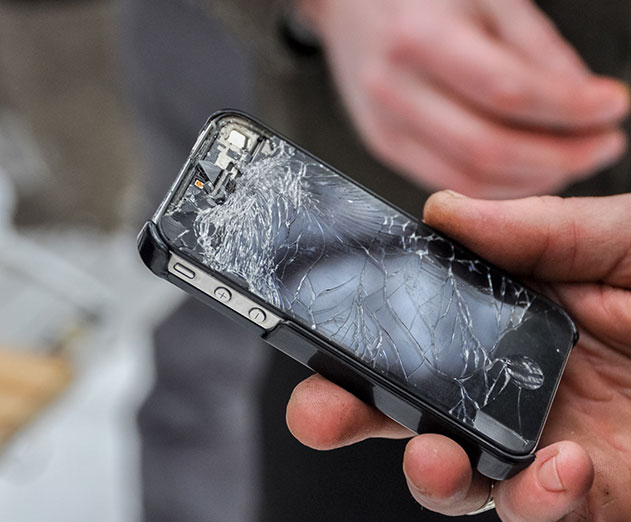Android
Android devices fail twice as much as iOS devices says new report
Wednesday, December 6, 2017

|
Richard Harris |
Apple or Android? A new mobile device report finds that Android devices fail over twice as much as the new iPhones.
Each quarter, mobile experts compare the features and performance of iOS and Android smartphones. In the third quarter of 2017, Apple’s iPhones came out victorious in the battle, with the Android device failure rate (30 percent) being nearly double that of the iOS device failure rate (16 percent), according to the Q3 2017 State of Mobile Device Performance and Health report released by Blancco Technology Group (LON: BLTG).
Interestingly, both Android and iOS devices have seen their failure rates increase quarter-over-quarter. In Q2 2017, for example, the failure rate for iOS devices worldwide was 12 percent. This has since increased to 16 percent in Q3 2017. Android devices have experienced a similar struggle, with the failure rate worldwide jumping from 25 percent in Q2 2017 to 30 percent in Q3 2017.
In September 2017, Apple unveiled its newest iPhone models - the iPhone 8, iPhone 8 Plus and iPhone X. These models have been lauded by mobile industry experts and have received significant interest and sales from users already. “Apple has always tried to offer the best quality and reliability with its iPhones,” said Russ Ernst, VP of Product Management, Blancco Technology Group. “There’s no doubt that Apple will continue to innovate with these newest models. But with drastic design changes and the introduction of new technology features, such as the facial recognition feature on the iPhone X, there are sure to be some challenges and performance issues that will arise.”
Interestingly, both Android and iOS devices have seen their failure rates increase quarter-over-quarter. In Q2 2017, for example, the failure rate for iOS devices worldwide was 12 percent. This has since increased to 16 percent in Q3 2017. Android devices have experienced a similar struggle, with the failure rate worldwide jumping from 25 percent in Q2 2017 to 30 percent in Q3 2017.
Key highlights from the Q3 2017 trend report include:
- The iPhone 6, iPhone 6S and iPhone 7 Plus models are plagued by high failure rates. In Q3 2017, the iPhone 6 had the highest failure rate (26 percent), followed by the iPhone 6S (11 percent) and the iPhone 7 Plus (9 percent).
- Samsung, Xiaomi and LG smartphones struggle with performance issues and failures. In Q3 2017, Samsung was the Android manufacturer with the highest failure rate (53 percent). Meanwhile, Xiaomi and LG emerged in the list of Android manufacturers with high failure rates, at 4 percent and 2 percent respectively.
- WiFi, receiver and Bluetooth problems cause frequent lags on iOS devices. Based on our Q3 2017 diagnostics data, WiFi accounted for 3 percent of the performance issues worldwide on iOS devices, followed by the receiver (2 percent) and Bluetooth (2 percent).
- Battery charge and carrier signal issues frustrate Android smartphone users. In Q3 2017, battery charge ranked as the fourth most common performance issue (5 percent) on Android smartphones worldwide. Meanwhile, the carrier signal also ranked high on the list of performance issues worldwide, at 6 percent.
- iOS apps crash seven times more frequently than Android apps. In Q3 2017, iOS apps crashed at a rate of 57 percent. This is significantly higher than the rate at which Android apps crashed (8 percent).
- Rooting is commonplace among Android users, while iOS jailbreaking is on the decline. According to our Q3 2017 data, Android users are more inclined to root their devices than iOS users are to jailbreak their iPhones. In fact, the rate of jailbroken devices worldwide was only 0.038 percent, which is considerably lower than the rate of rooted Android devices (0.99 percent).
In September 2017, Apple unveiled its newest iPhone models - the iPhone 8, iPhone 8 Plus and iPhone X. These models have been lauded by mobile industry experts and have received significant interest and sales from users already. “Apple has always tried to offer the best quality and reliability with its iPhones,” said Russ Ernst, VP of Product Management, Blancco Technology Group. “There’s no doubt that Apple will continue to innovate with these newest models. But with drastic design changes and the introduction of new technology features, such as the facial recognition feature on the iPhone X, there are sure to be some challenges and performance issues that will arise.”

Become a subscriber of App Developer Magazine for just $5.99 a month and take advantage of all these perks.
MEMBERS GET ACCESS TO
- - Exclusive content from leaders in the industry
- - Q&A articles from industry leaders
- - Tips and tricks from the most successful developers weekly
- - Monthly issues, including all 90+ back-issues since 2012
- - Event discounts and early-bird signups
- - Gain insight from top achievers in the app store
- - Learn what tools to use, what SDK's to use, and more
Subscribe here









